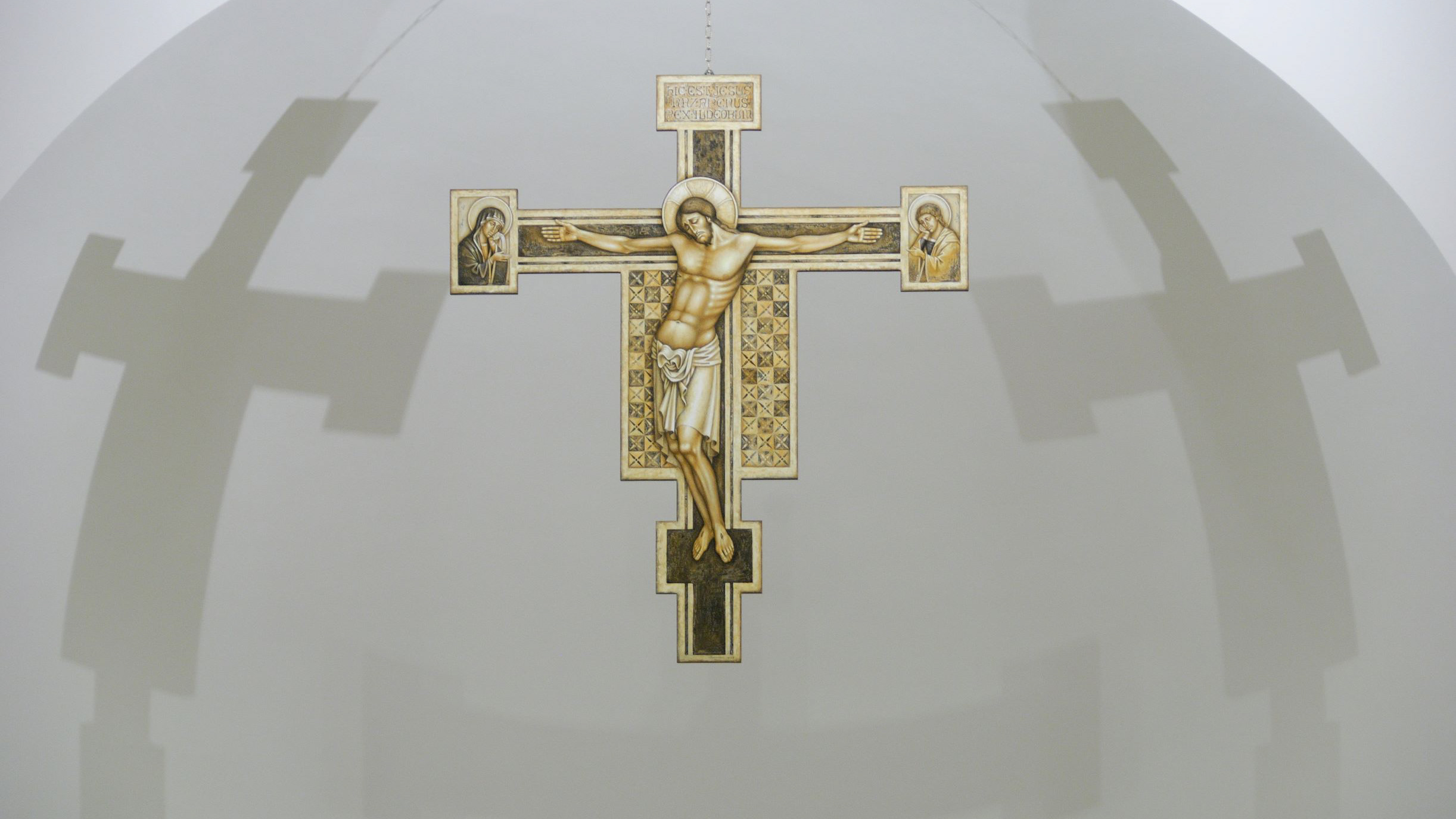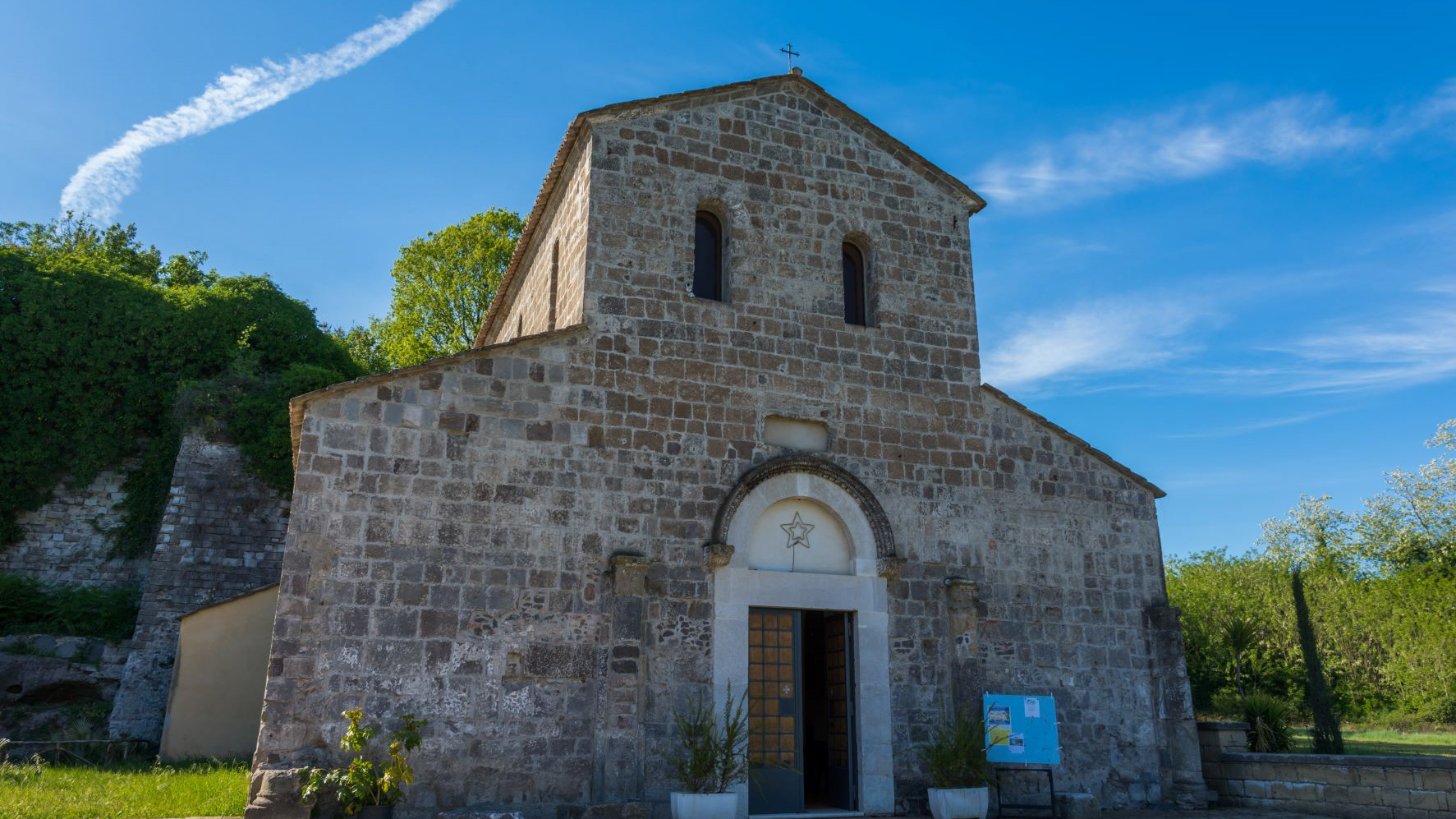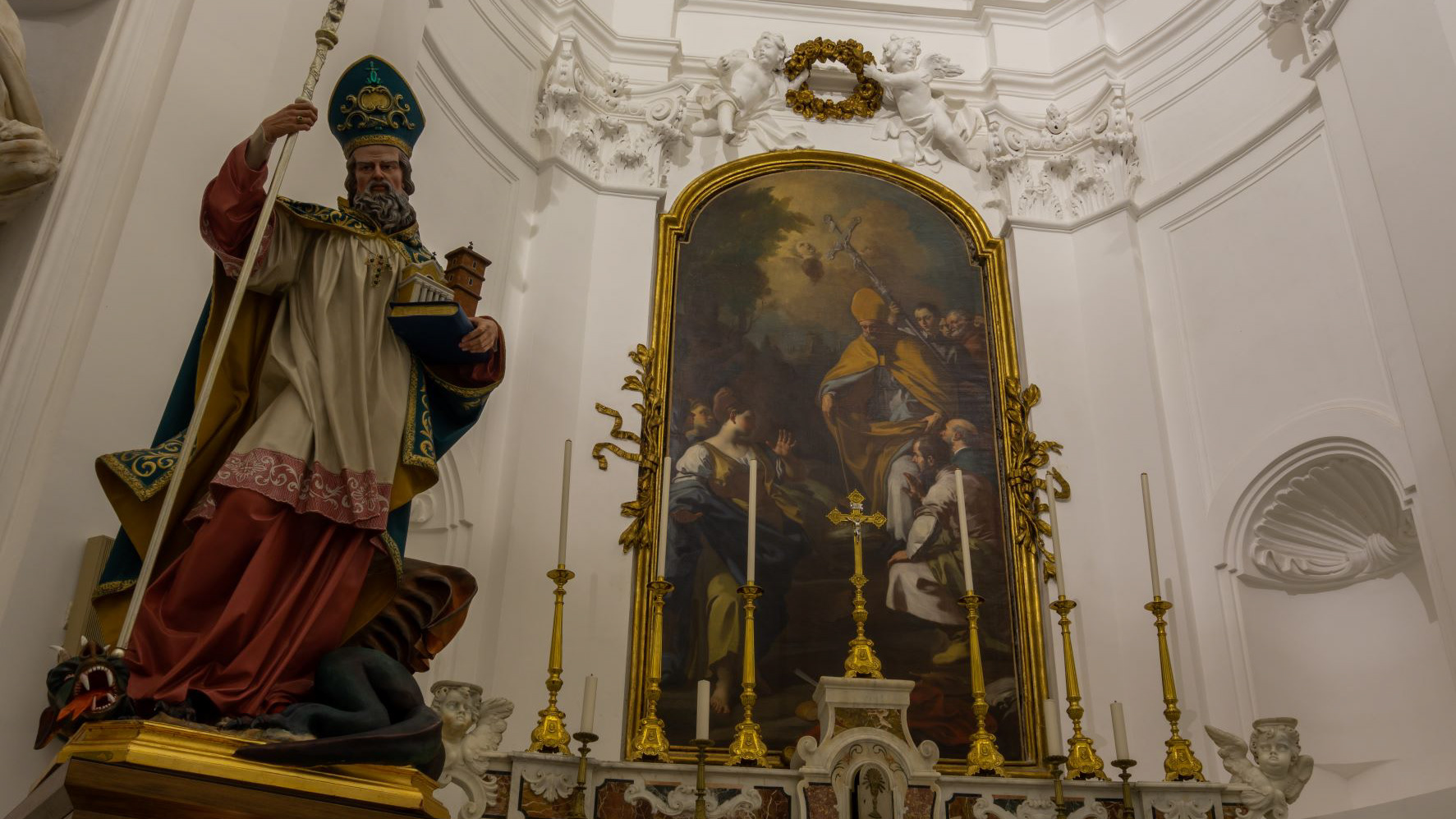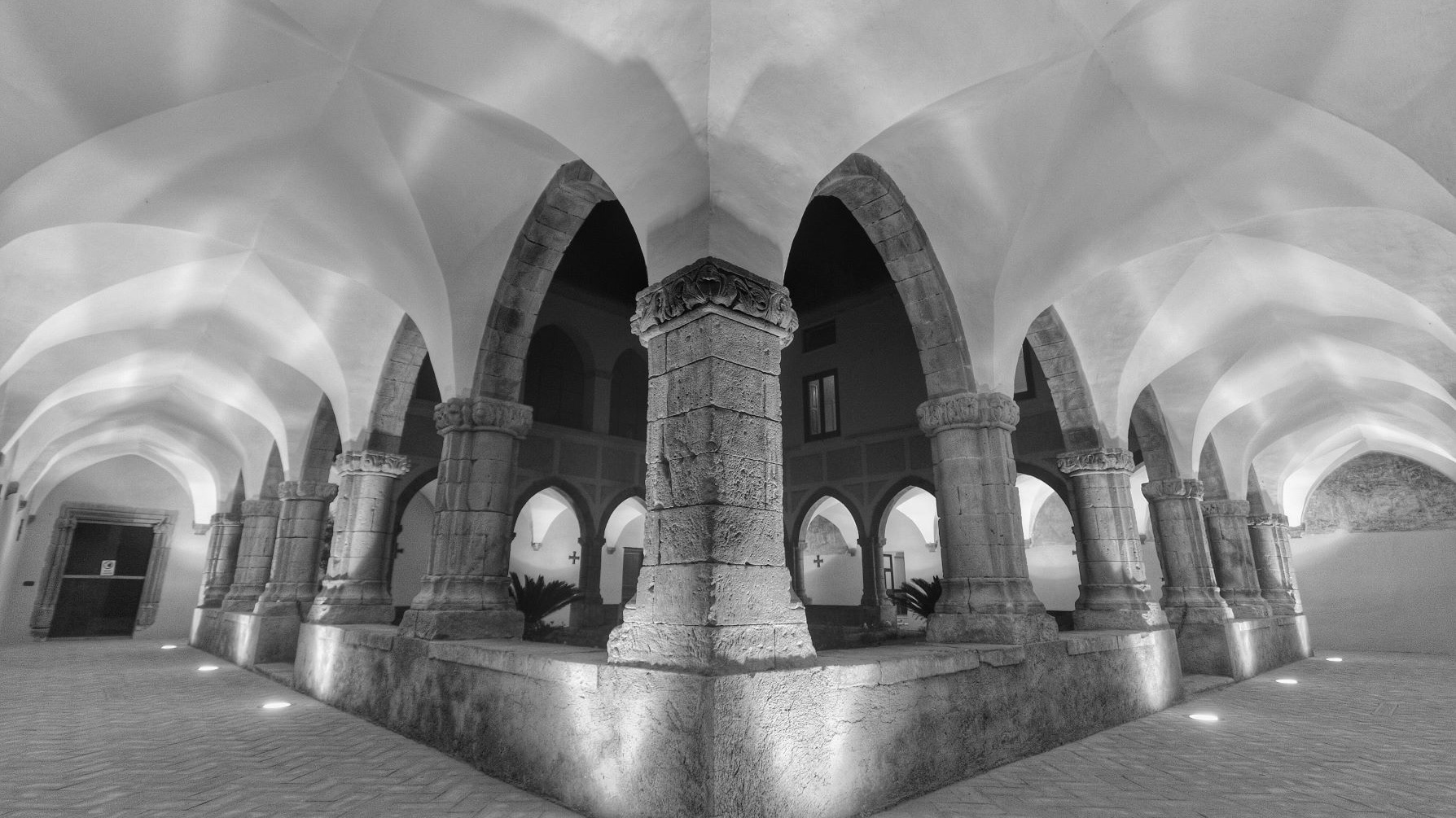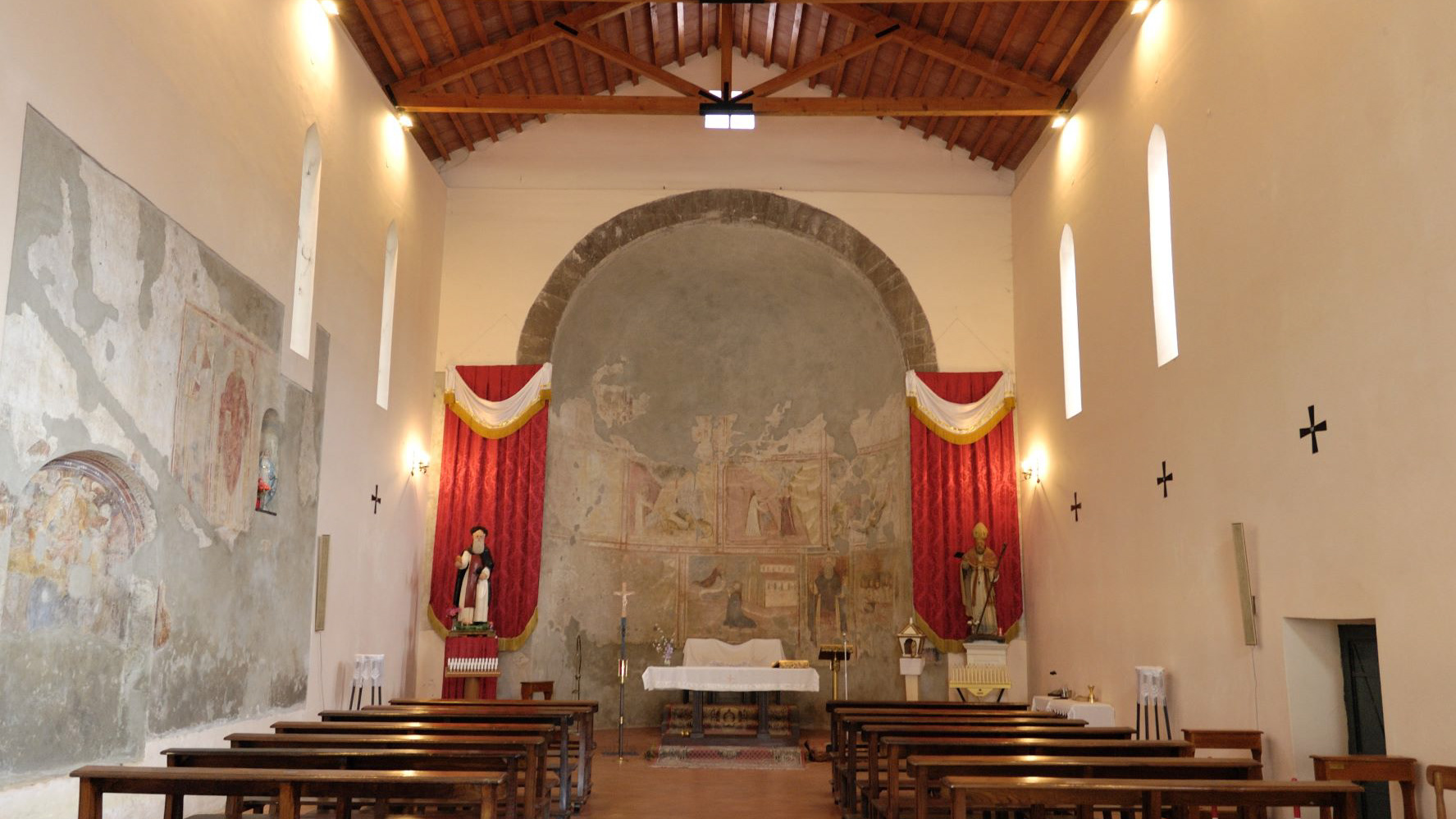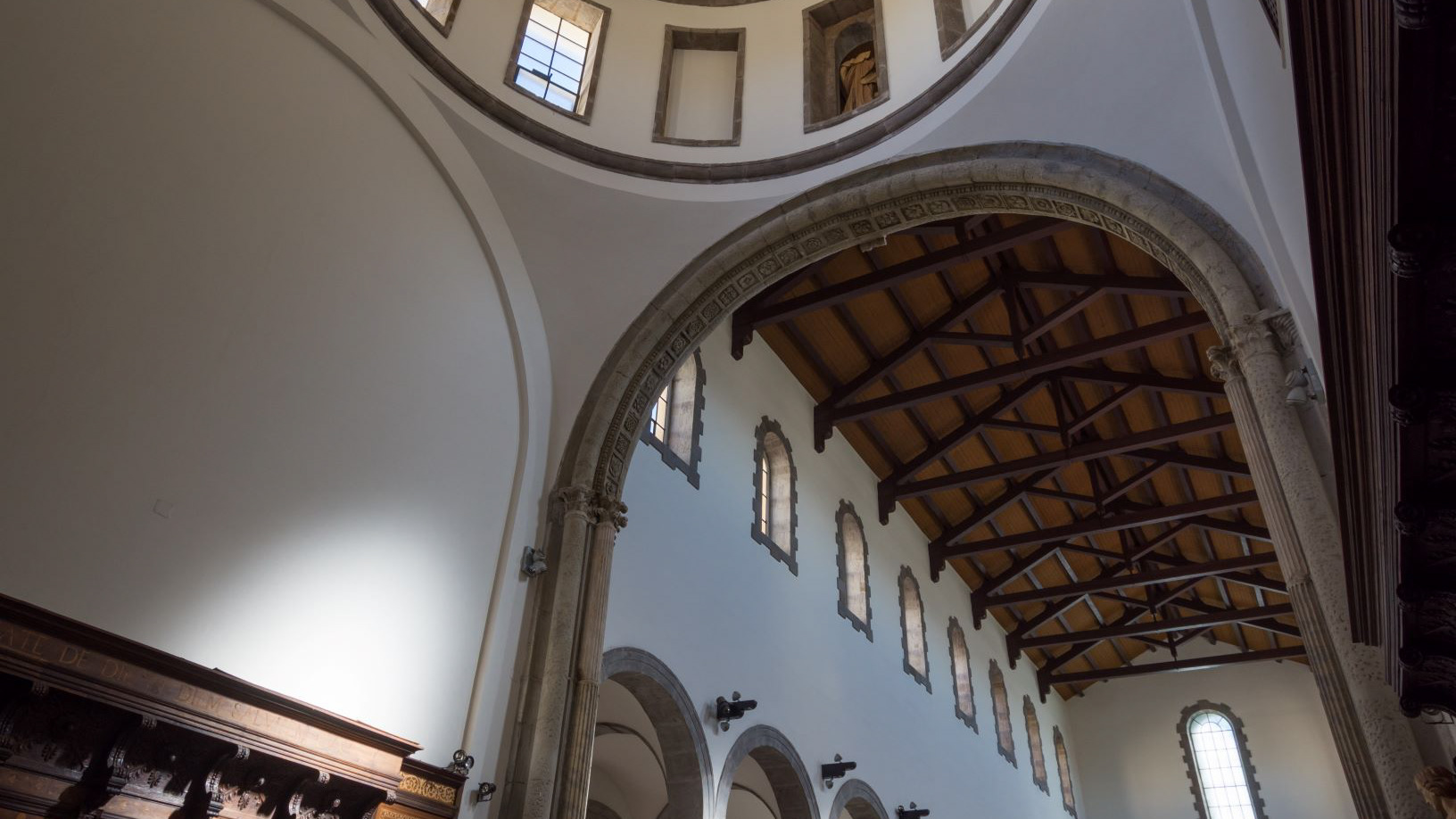Benedictine Abbey of S. Angelo in Formis
The church, dedicated to San Michele Arcangelo, rises along the western slope of Mount Tifata. Initially in the documents the building is indicated as ad arcum Dianae ("at the arch of Diana"), recalling that it stood above the remains of the temple dedicated to this divinity, while later it is referred to with the denominations ad Formas , Informis or in Formis. The etymological interpretation of the new name is controversial: on the one hand, the hypothesis is that it derives from the Latin term forma ("aqueduct"), and that it indicates the proximity of a conduit or aquifer; while on the other hand the term is considered derived from the word informis ("formless", and therefore "spiritual"). The remains of the Roman temple were found in 1877, and it has been noted that the basilica retraces its perimeter, adding the apses at the end of the aisles. The first construction of the basilica can be traced back to the Lombard period, on the basis of the widespread diffusion of the cult of the archangel Michael among the Lombards at the end of the sixth century. At the time of the bishop of Capua Pietro I (925-938), the church was donated to the monks of Montecassino, who wanted to build a monastery there. The church was then taken from the monks and given back to them in 1072 by the prince of Capua, Riccardo. The then abbot Desiderio di Montecassino (the future Pope Victor III) decided to rebuild the basilica (1072 - 1087) and still respected the architectural elements of pagan origin. To him we owe the frescoes of the Byzantine-Campanian school that decorate the interior and which constitute one of the most important and best preserved pictorial cycles of the time in southern Italy. The reconstruction of the portico in front of the church, with new frescoes, and a reconstruction of the bell tower following a collapse have been attributed to the 12th century
You may also like
